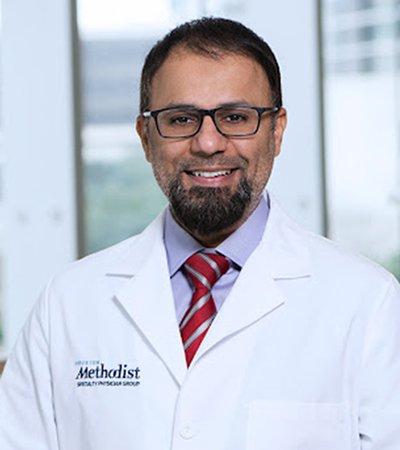

A Strong Option:
EUS-guided Gallbladder Drainage
A Strong Option:
EUS-guided Gallbladder Drainage
By Denise Bray Hensley

Ali Raza, MD
Ali Raza, MD, is performing an increasing number of endoscopic ultrasound (EUS)-guided gallbladder drainage procedures with great success.
He now recommends the procedure for patients who are not good candidates for gallbladder surgery.
“Gallbladder surgery can be challenging in some patients who are extremely sick. This procedure is a much safer alternative,” said Raza, who has been a gastroenterologist for 10 years and has performed EUS-Guided Gallbladder Drainage for six years. “This is a great procedure because it can temporize the acute problem and may provide a long-term solution.”
The carefully selected candidates may have advanced cancer of the bile duct, ampullary or pancreatic cancer. Otherwise, they may have significant morbidity making them ineligible for surgery or be averse to surgery.
In the past, these seriously ill patients were treated with a drainage tube placed in the gallbladder from the upper abdominal wall. The tube may remain in place for a few weeks or a few months and removing it could possibly lead to a recurrence of gallbladder inflammation.
EUS-guided gallbladder drainage is performed from the inside of the stomach where the clinician will place an internal stent, initially of metal, into the gallbladder, which is then drained inside the stomach of a small bowel without a tube left sticking out. The metal tube can be left in; however, it is typically replaced by a plastic stent. This procedure also can be used for patients with gallstones, which can be safely removed, without removing the gallbladder.
“Once you drain the gallbladder inside the alimentary tract, you’ve solved the problem,” Raza said, adding that he has yet to experience any of his patients returning with new issues. “Recovery is like any other endoscopy recovery. If they wake up and there is no pain or symptoms, they can go home,” he said. “Very few hospitals currently offer this option. It’s a painless procedure.”





